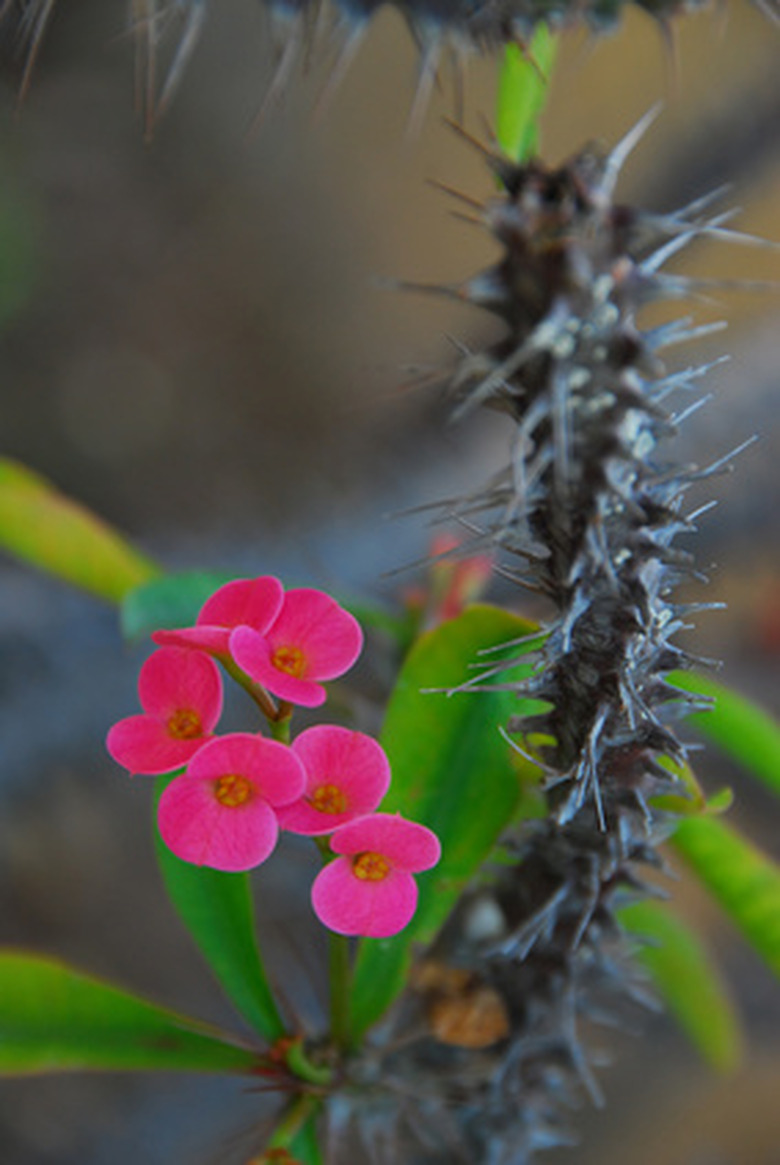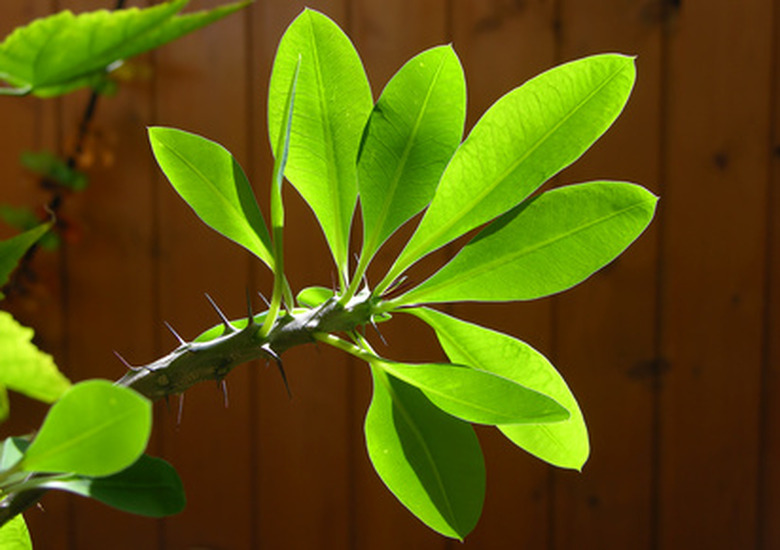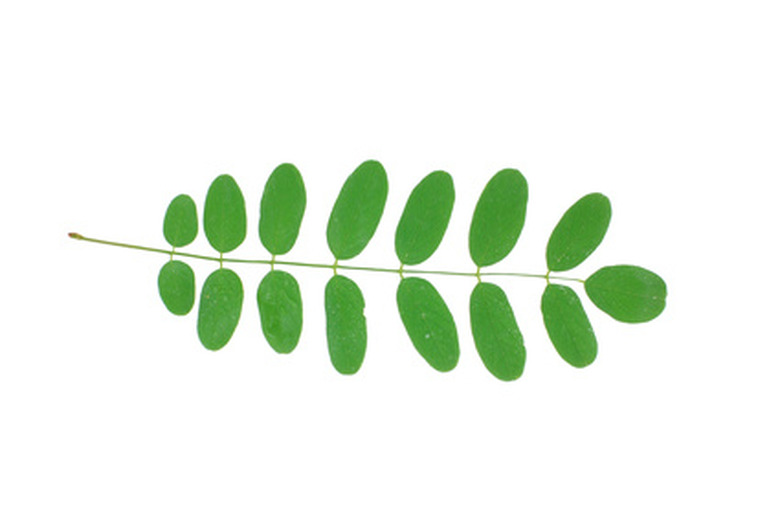Poisonous Plants With Thorns
In the continuing struggle to survive, many plants have developed adaptations to cope with predation. One of these tactics is to produce sharp thorns. This deters large grazing animals from stripping all of the foliage. Another method of protection is for a plant to produce chemicals that either kill or deter an animal or insect from eating that plant. Plants that have both toxic chemicals and thorns are equipped to handle many different threats.
Crown of Thorns
The crown of thorns (Euphorbia milii) is a popular houseplant that is native to Madagascar. It gets its common name from the legend that it was the plant used to create the crown of thorns placed on Jesus during the crucifixion. Crown of thorns will grow to 5 feet tall and 5 feet wide with small, oval-shaped green leaves and bright red, pink, white or yellow flowers. The stems are succulent and covered with very sharp thorns. Most members of the crown of thorn's genus, Euphorbia, produce a thick white sap called latex that bleeds from the stem if it is damaged. It is poisonous if ingested in large quantities, and can cause a poison oak-like rash when it comes in contact with skin.
- In the continuing struggle to survive, many plants have developed adaptations to cope with predation.
- Most members of the crown of thorn's genus, Euphorbia, produce a thick white sap called latex that bleeds from the stem if it is damaged.
Black Locust
The black locust (Robinia pseudoacacia) is a mid-sized deciduous tree that's native to the Central and Southern United States, but has become an invasive weed in many parts of the world. It grows to 80 feet tall and has compound leaves that resemble an acacia tree, which is where the species name comes from. It is famous for the honey that is produced when bees pollinate its flowers. The young trunk and branches produce 1-inch thorns. Black locust is poisonous to humans when ingested, but wildlife such as deer often graze on its foliage.
Sensitive Plant
The sensitive plant (Mimosa pudica) is known in every area of the tropical world where it is an invasive weed. This plant has the unique ability to close it's leaves when it has been touched, making it look dead and perhaps deterring predation. The small shrub grows to 3 to 5 feet tall, and about the same width. The leaves are compound and resemble a fern frond. The stems are covered with small thorns. This plant is reported to be toxic, and the U.S. Forest Service claims, "The seeds and other plant parts of sensitive plant contain mimonsine, an amino acid that is known to cause hair loss and depressed growth in mammals."
- The black locust (Robinia pseudoacacia) is a mid-sized deciduous tree that's native to the Central and Southern United States, but has become an invasive weed in many parts of the world.
- This plant has the unique ability to close it's leaves when it has been touched, making it look dead and perhaps deterring predation.


